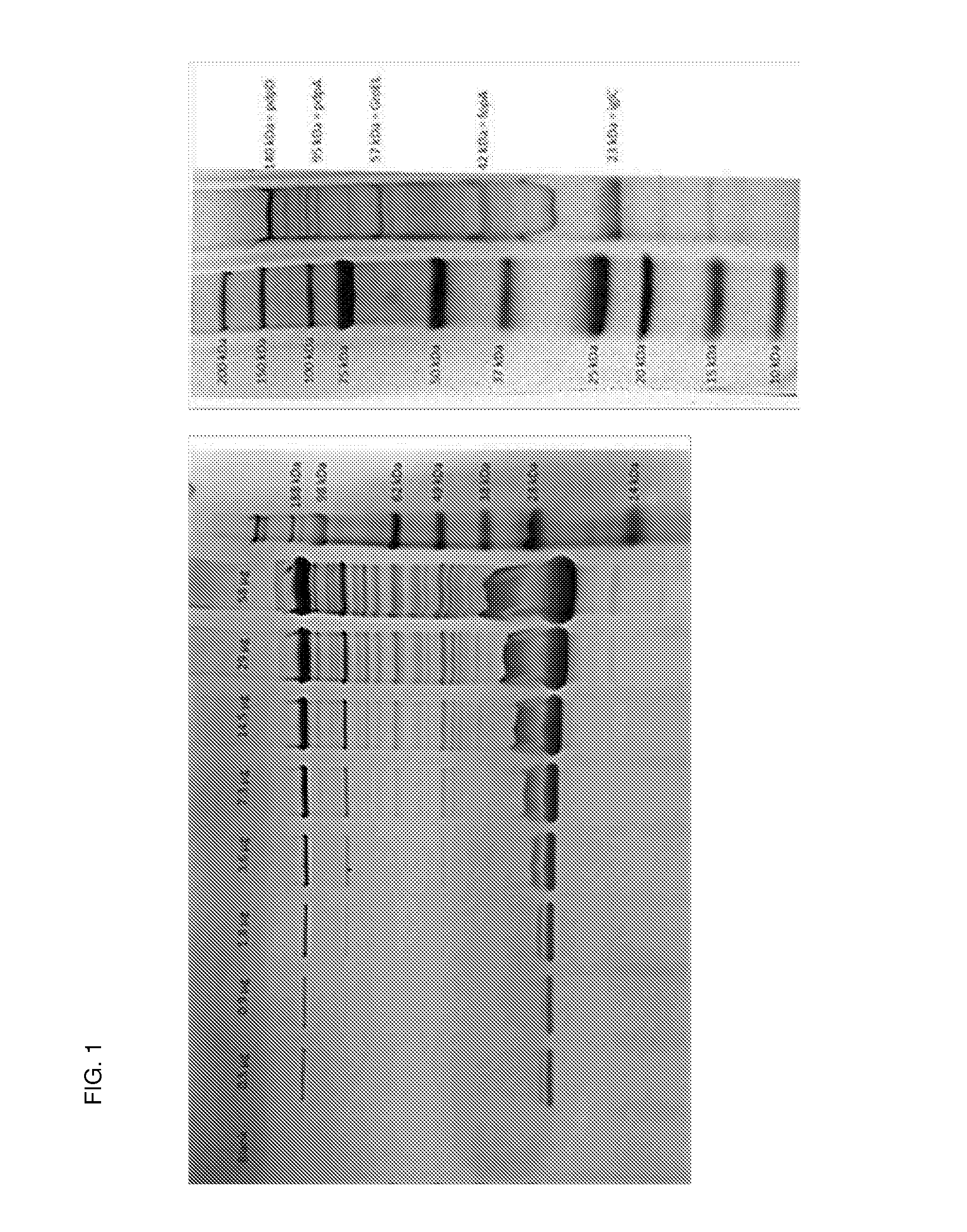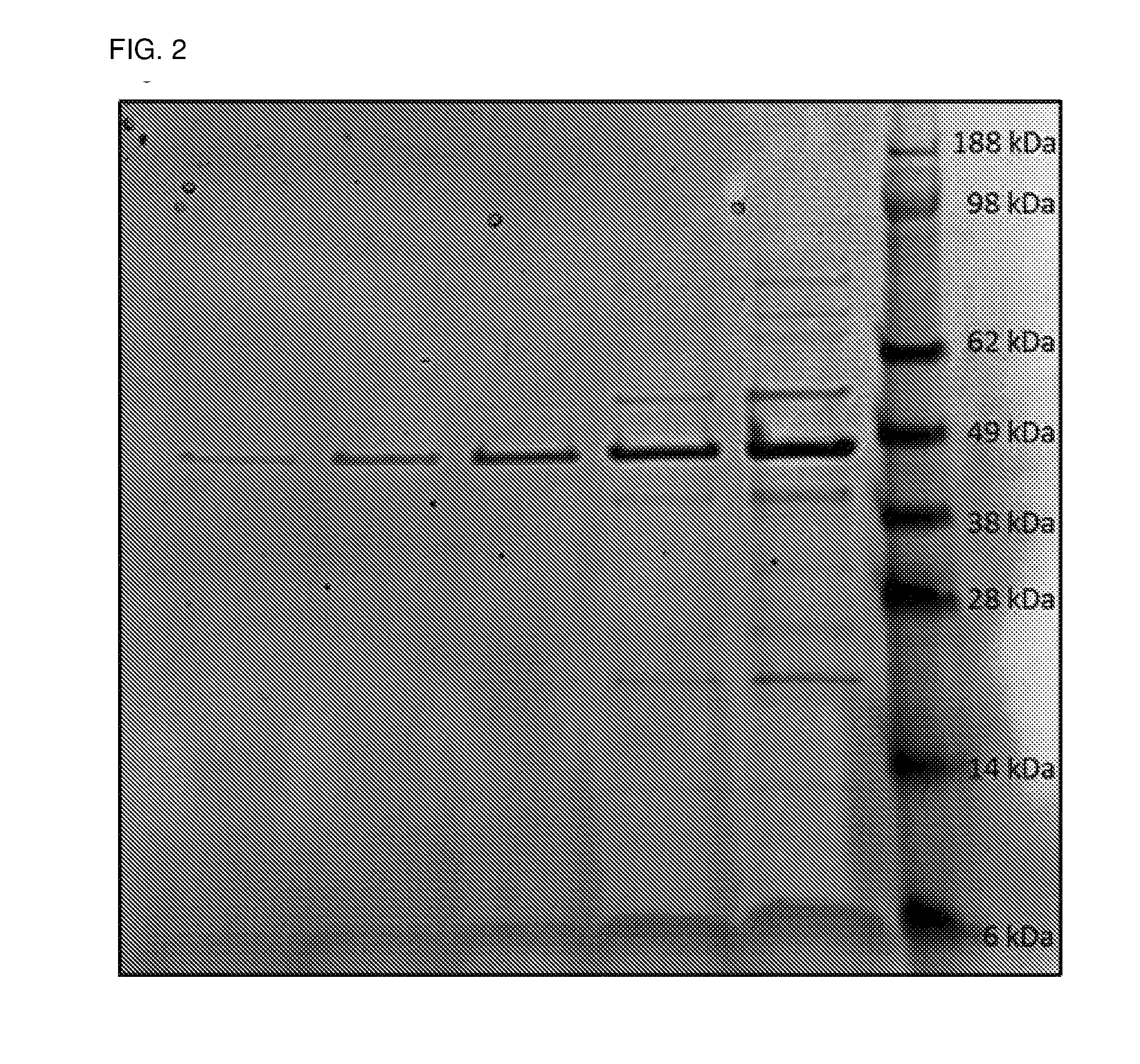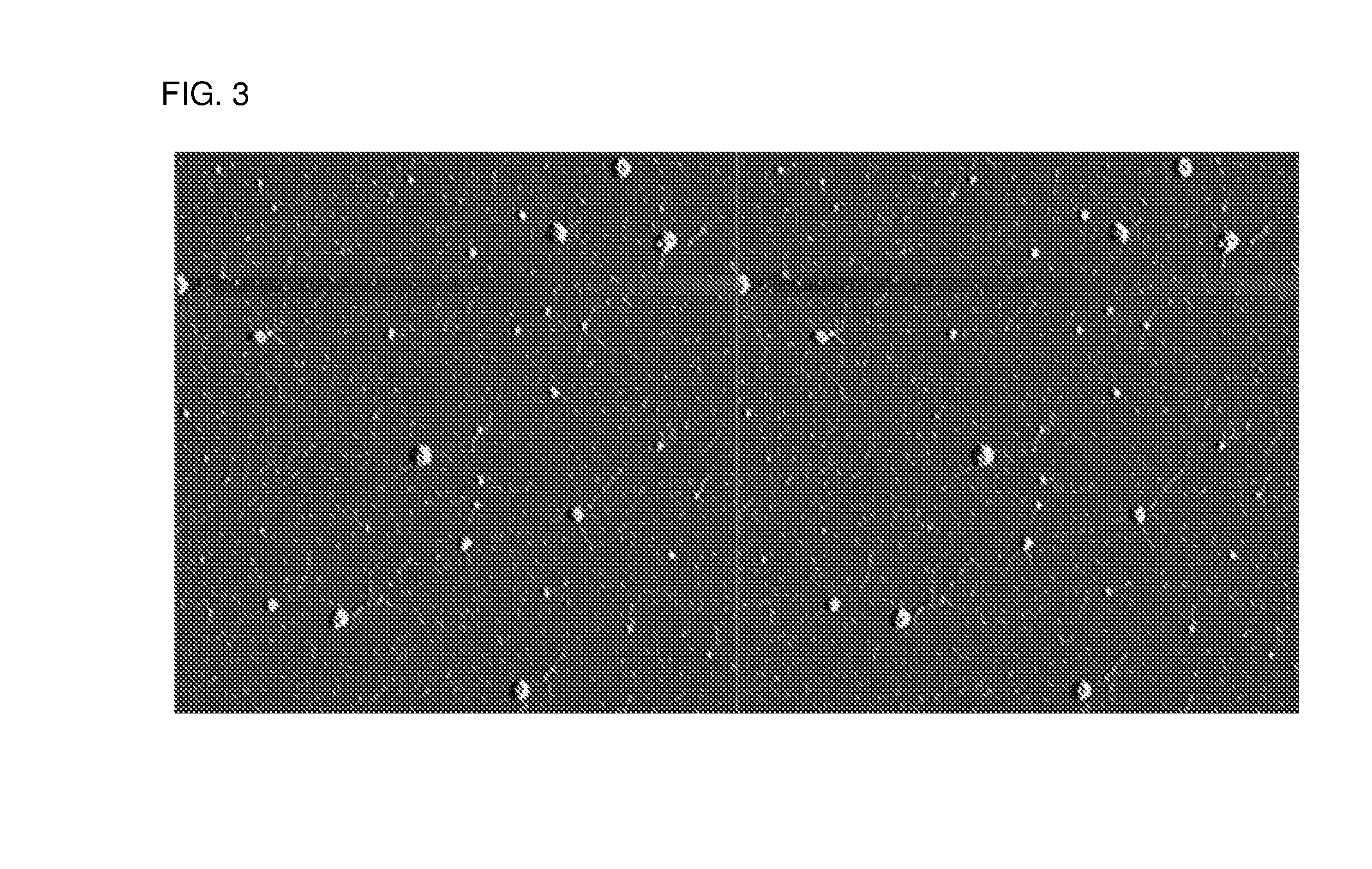Outer membrane vesicles and uses thereof
a technology of outer membrane and vesicles, which is applied in the field of outer membrane vesicles from microorganisms, can solve the problems of large losses, sporadically problematic, and difficult vaccine developmen
- Summary
- Abstract
- Description
- Claims
- Application Information
AI Technical Summary
Benefits of technology
Problems solved by technology
Method used
Image
Examples
example 1
Materials & Methods
[0083]Strains, media and growth conditions. F. noatunensis ssp. noatunensis NCIMB14265 isolated from diseased Atlantic cod Gadus morhua L. in Norway (Ottem et al., 2007) and F. philomiragia ssp. philomiragia ATCC25015 was kept for long term storage at −80° C. as previously described. Cultivation of bacteria on solid media was performed on ECA plates without antibiotics at 20-22° C., and liquid cultures were performed in Eugon Broth supplemented with 2 mM FeCl3 as previously described (Brudal et al., 2013).
[0084]Isolation of OMVs. For initial experiments, 10 ml overnight cultures were used to inoculate 100 ml liquid cultures until OD600≈0.1, and grown to late-logarithmic or early stationary growth phase. The bacteria were pelleted at 15 000 g at 4° C. for 10 minutes, and the supernatant harvested. OMV-containing supernatant was sterile filtered through 0.45 μm filters, followed by a second filtration step using 0.2 μm filters to remove any contaminating cells and c...
example 2
Liquid Culture Growth of P. salmonis to High Densities
Materials & Methods
[0102]Strains, media and growth conditions. P. salmonis was kept for long term storage at −80° C. in 10% skimmed milk or in Eugon broth supplemented with 20% glycerol. Cultivation of bacteria on solid media was performed on ECA plates, and liquid cultures were performed in Eugon Broth supplemented with 0.1% Casamino acid (BD suppliers).
OMV Isolation From P. salmonis.
[0103]2×10 ml overnight cultures were used to inoculate 2×100 ml liquid cultures of P. salmonis in Eugon broth supplemented with Casamino acids and grown overnight to mid-logarithmic growth phase. The bacteria were pelleted at 15 000 g at 4° C. for 10 minutes, and the supernatant harvested. OMV-containing supernatant was sterile filtered through 0.45 μm filters, followed by a second filtration step using 0.2 μm filters to remove any contaminating cells and cell debris. 140 ml double-filtered OMV-containing supernatant was subjected to ultracentrifu...
example 3
Immune Response of Adult Zebrafish Against High (1×1010 and Lower (1×107) Dose of P. salmonis and Against Exposure of OMV Isolated From P. salmonis
[0106]Adult zebrafish were infected with 1×1010 or 1×107 CFU of P. salmonis. Fish infected with 1010 CFU started to die after 3 days, while fish infected with 107 CFU started to die after 5 days. 50% of the fish in both groups were dead after 6 days.
[0107]Adult zebrafish were then injected with 40 ug OMV isolated from P. salmonis. No toxicity was observed after 7 days.
[0108]Immune responses were analyzed in the spleen, heart, kidney and gills of zebrafish infected with P. salmonis (FIGS. 10a, b, c and d and 11a, b, c and d) and injected with OMVs isolated from P. salmonis (FIGS. 12a, b, c and d). The zebrafish infected with P. salmonis strain 5692 induced an overall high pro-inflammatory immune response with tnfa suggesting a high initial response to the infection. Similar responses have been detected in Atlantic salmon infected with P. ...
PUM
| Property | Measurement | Unit |
|---|---|---|
| diameter | aaaaa | aaaaa |
| pH | aaaaa | aaaaa |
| total volume | aaaaa | aaaaa |
Abstract
Description
Claims
Application Information
 Login to View More
Login to View More - R&D
- Intellectual Property
- Life Sciences
- Materials
- Tech Scout
- Unparalleled Data Quality
- Higher Quality Content
- 60% Fewer Hallucinations
Browse by: Latest US Patents, China's latest patents, Technical Efficacy Thesaurus, Application Domain, Technology Topic, Popular Technical Reports.
© 2025 PatSnap. All rights reserved.Legal|Privacy policy|Modern Slavery Act Transparency Statement|Sitemap|About US| Contact US: help@patsnap.com



